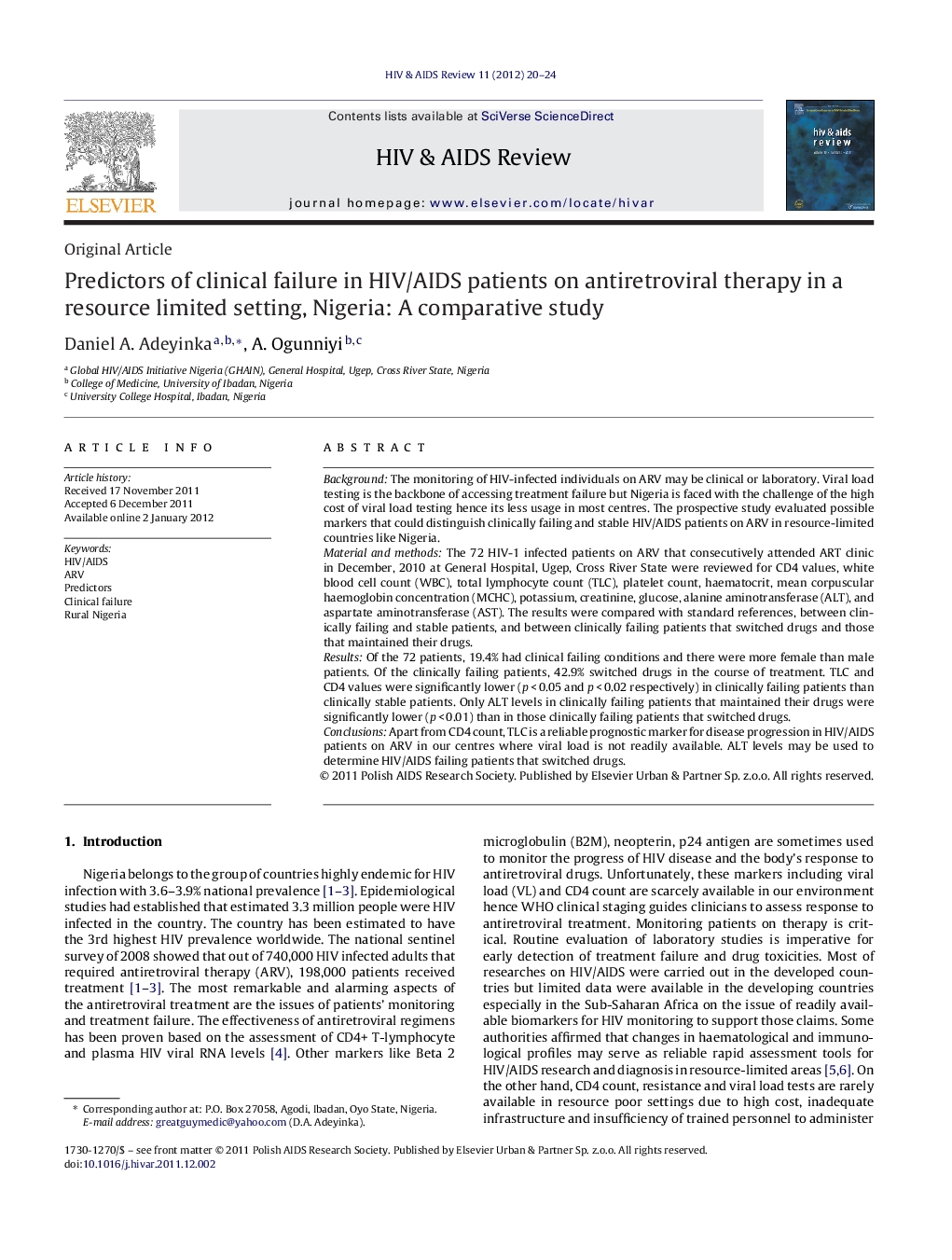| Article ID | Journal | Published Year | Pages | File Type |
|---|---|---|---|---|
| 3332419 | HIV & AIDS Review | 2012 | 5 Pages |
BackgroundThe monitoring of HIV-infected individuals on ARV may be clinical or laboratory. Viral load testing is the backbone of accessing treatment failure but Nigeria is faced with the challenge of the high cost of viral load testing hence its less usage in most centres. The prospective study evaluated possible markers that could distinguish clinically failing and stable HIV/AIDS patients on ARV in resource-limited countries like Nigeria.Material and methodsThe 72 HIV-1 infected patients on ARV that consecutively attended ART clinic in December, 2010 at General Hospital, Ugep, Cross River State were reviewed for CD4 values, white blood cell count (WBC), total lymphocyte count (TLC), platelet count, haematocrit, mean corpuscular haemoglobin concentration (MCHC), potassium, creatinine, glucose, alanine aminotransferase (ALT), and aspartate aminotransferase (AST). The results were compared with standard references, between clinically failing and stable patients, and between clinically failing patients that switched drugs and those that maintained their drugs.ResultsOf the 72 patients, 19.4% had clinical failing conditions and there were more female than male patients. Of the clinically failing patients, 42.9% switched drugs in the course of treatment. TLC and CD4 values were significantly lower (p < 0.05 and p < 0.02 respectively) in clinically failing patients than clinically stable patients. Only ALT levels in clinically failing patients that maintained their drugs were significantly lower (p < 0.01) than in those clinically failing patients that switched drugs.ConclusionsApart from CD4 count, TLC is a reliable prognostic marker for disease progression in HIV/AIDS patients on ARV in our centres where viral load is not readily available. ALT levels may be used to determine HIV/AIDS failing patients that switched drugs.
